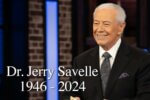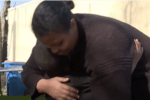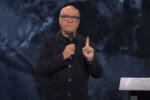Their music is loud, their language is different, and their spiritual passion is contagious. Here’s how thousands of radical Hispanic teens are changing American Christianity.
Early one Monday morning last spring, several members of the youth group from Bethlehem Worship Center in Bethlehem, Pennsylvania, marched onto their high school campus with a mission. The teens, having just returned from a weekend youth convention, were on fire for Jesus and ready to see the Holy Spirit move in their school. So they determined to gather in the school lobby for prayer before the day’s classes began.
Suddenly, without any hype or coaxing, the Holy Spirit descended on the group. The teens began weeping, trembling, shouting praises and speaking in tongues. A few fell down, overcome by God’s presence.
Teachers and classmates looked on wide-eyed. They didn’t know what to make of the spectacle, which lasted more than 45 minutes. Afterward, the small band of prayer warriors was summoned to the school office after a security guard alerted the principal.
The principal didn’t know how to react when he saw the almost 15 teen-agers carrying Bibles file into his office. When he had received the security guard’s call, he had expected he would be confronting a gang of unruly troublemakers. But these youth appeared to be normal kids.
“What’s going on?” demanded the confused principal.
As the teens explained what had happened, one student stepped forward and shared the gospel. “We don’t need more programs, or more security or metal detectors,” he said. “What the school needs is Jesus.”
“I’m a Christian myself,” the principal admitted. After calming down, he suggested they conduct their prayer times in a less disruptive way and offered them a permanent spot on campus where they could hold their meetings.
The incident opened up the school to evangelism. Today, the church’s youth pastor regularly holds Christian events at the school that attract unsaved students.
“The Lord has been doing wonderful things with our youth,” says pastor Charles Olmeda of the predominately Hispanic Bethlehem Worship Center, where these teens attend. “The young people bring life to the church. They motivate the older people to worship God more freely.”
He says the youth group is now the largest ministry in his church, which has grown from 20 to 150 members in two years.
The way the Holy Spirit has stirred the hearts of these Pennsylvania teens is not an isolated case. Something big is happening among Hispanic youth nationwide.
“We have seen an increase in spiritual hunger among Hispanic young people–a passion for God,” says Charlie Rivera, youth director of the Gulf Latin American District of the Assemblies of God (AG) in San Antonio. “The kids are tired of hearing about revival. They want to experience it. There has been a spiritual resurgence in the last four years.”
Michelle Villanueva, a youth leader at First Spanish Pentecostal Church in Camden, New Jersey, believes it is more than just a resurgence. Says Villanueva: “It’s a revolución espiritual–a spiritual revolution!”
A Holy Passion
Hispanic youth in the United States are passionately seeking God and account for some of the largest youth gatherings in evangelical circles. Almost 3,000 Latino teens worshiped together at Winterfest 2000, a youth conference that was held last December in Bushkill, Pennsylvania. The historic gathering was
characteristic of the renewal among Hispanic young people across the country.
In the opening service, tumultuous praise exploded throughout the conference hall. Teen-agers and young adults shouted, danced and gyrated to the rhythmic beat of Latin worship music. Others were weeping, raising their hands or even leaping. All of them wanted more of God.
“Que tu fuego me purifique! Let Your fire burn, Lord!” shouted youth director Peter DeJesus of Third Day Worship Center in Staten Island, New York. “Te adoramos! We worship You!”
“Speak to Him in His language,” urged DeJesus. “Not in English or Spanish but the language of the Spirit of God.”
Hundreds raced to the platform as rows of chairs were moved to make room for the crowd of teens hungry for more of the Holy Spirit. Many hit the ground and bowed in intercession. Friends formed prayer circles and cried out to God. A young father pressed his baby daughter close to his chest as he worshiped. It was more than mere emotion.
“I’ve never seen anything like this before,” conference attendee Raymond Rodriguez told Charisma. “It’s like, amazing. I never thought so many young people would come together to praise God.”
Overcome by the Holy Spirit, Natasha, 13, dropped to the floor, shaking and weeping. “I feel fire inside me,” she said. “I can’t stand. The presence of the Lord is so nice, so sweet.” She traveled 300 miles from Boston to attend the event.
“The Lord touched me,” she continued. “He told me I’ve got to go to my school and tell everybody. I want them to know me for preaching the gospel, for being a Jesus freak.”
The testimonies shared from the stage were as dynamic as the times of prayer and worship. Youth director Giselle Rivera told the audience how she lost her fear of confronting people with the gospel when she was 16.
Her church youth group had been challenged to evangelize on a New York City subway train. Each member entered a different subway car and delivered a four-minute sermon and altar call. “I was scared,” she said. “I really never preached in public.”
Hesitating when her turn came, Rivera closed her eyes.
Grasping the handrails to steady herself in the bumpy subway car, she told the passengers about the goodness of Christ.
“I preached about the resurrection and how Christ died for us,” she said. Some people listened, while others ignored her or flashed annoyed expressions.
How could this audacious teen-ager disturb their Saturday morning trip into Manhattan? Was she crazy? No one responded to her call to receive Jesus.
Discouraged, Rivera turned away and headed for the next car when a young Hispanic lady tugged at her sweatshirt. With tears in her eyes, the young lady told Rivera she was planning to kill herself by jumping in front of a train at the next station.
“She was intrigued to know about what God could do in her life,” Rivera said. “I began to minister to her. I prayed for her and told her that Jesus
loves her.”
Rivera told the audience of teens gathered at Winterfest 2000 that obeying the Holy Spirit and persuading the young lady against committing suicide radically changed her own life. “Since that day I haven’t been afraid to share the gospel,” she said.
And she’s not the only one. Hispanic teens in her church in the Richmond Hill area of Queens, New York, form weekly evangelism teams and go door to door to hand out tracts. “I believe there is a definite revival,” Rivera says. “You can see it.”
“The Holy Spirit is taking people from the streets,” adds Ariel Calderon, a college student and member of First Spanish Pentecostal in Camden. “We’re seeing lives changed right in front of our
eyes–people we thought were hopeless.” The church has experienced revival since 1998 and has grown to an attendance of 1,000. Services often last four to five hours.
“We know what time we start, but we don’t know the time we’re going to finish,” youth leader Villanueva says. “The revival is impacting the youth most of all because they do not set limits on God.”
“They are hungry,” she continues. “We pray. We fast together. God is doing something so big with the youth of this nation. The youth are going to rock this world.” She cites examples of street kids being delivered from drug and alcohol addiction. Others smash hard-rock CDs on the altar and witness in their schools.
“Even though I was born and raised in church, I felt like ever since revival has hit my life, I have never been the same,” says conference attendee Joanna Vale. She says God gave her a new boldness, and now she leads a prayer club in her high school and shares her faith with classmates.
“I make sure they know there is a difference between being religious and being a Christian,” she says. She doesn’t mind being labeled as a Jesus freak who has experienced the Holy Spirit’s fire.
A Blazing Fire
The fire of revival blazing among young Hispanics mirrors the rapid growth of the Latin Pentecostal
church overall. “The Hispanic church is one of the fastest growing segments of the Assemblies of God,” reports Efraim Espinoza of the AG Commission on Ethnic Relations in Springfield, Missouri.
The AG added 353 new Hispanic churches from 1989 through 1999, bringing the total to 1,646. Church membership increased 49 percent to 182,924–12.3 percent of the AG’s total church membership of 1,492,196.
But the influence of the Hispanic community is not limited to strictly Spanish churches. Espinoza reports that 44.2 percent of the AG’s 12,055 churches in the United States have Hispanics in their congregations. And it is estimated that more than 60 percent of those Latino churchgoers are under the age of 30.
Jesse Miranda, professor and director of the Center for Urban Studies and Ethnic Leadership in the Graduate School of Religion at Vanguard University in Costa Mesa, California, sees the revival among young Hispanics as a new fire of intensity from Latin America.
“These are signs of the last days,” he says. “I sense a genuine move of the Spirit among our young people because they are truly hungry,” adds Juan Garcia, coordinator of Hispanic Youth and Short Term Evangelism Programs for the Church of God (COG), Cleveland, Tennessee. He reports that Hispanics make up the fastest growing segment of the COG.
No longer limited to storefront missions in urban barrios, Hispanic churches are growing dramatically, some congregations topping 1,000 members. Iglesia El Calvario AG in Orlando, Florida, draws 2,300 worshipers on Sunday mornings.
“The Lord has put a hunger in our young people to praise Him and share the gospel among their peers,” says youth pastor Gary Berrios. “There is a deeper desire for holiness. The kids get together in homes, prostrating themselves in worship for two to three hours.”
Nick Garza, a youth director in Sacramento, California, says he noticed a new outpouring among young Hispanics beginning around
1994 to 1995.
“I believe that the youth are thermostats in the church, not thermometers,” Garza says. “They kind of set the tone.” He has witnessed powerful stirrings where young people are trained to preach the gospel in their schools. “You can call it an ‘under the table rebellion,'” he adds.
Juan Garza, youth pastor of Iglesia Bethel AG in Othello, Washington, reports how his youth group raised $20,000 for missions last year in just eight months. The teens worked in potato fields, picked apples and did any odd job they could find.
“They forgot about school clothes and supplies and gave to Jesus,” Garza recalls. “We had 12-year-olds give more than $700 without help from their parents.
“The church was affected amazingly,” he adds. “Moms and dads are not ordinary members anymore. They have caught on to the spirit of giving in such a way that God has opened incredible doors of heaven and is blessing our church tremendously. People are getting saved. We can barely contain the excitement of these young people. It’s catching fire.”
And the fire is spreading. Young Latinos across the nation are turning their lives over to Jesus and experiencing deliverance from severe problems.
Raul Remedios, 19, joined the Latin Kings gang in Staten Island, New York, when he was 16. “It was the biggest mistake I made in my life,” he says. “I was looking for love. I was confused.”
Promoted to the rank of warlord, Remedios led a 100-member Latin Kings “tribe” in raids and turf battles against rival gangs. “I was in charge of calling the shots,” he says. Armed to the teeth with ice picks, box cutters, 9 mm pistols and sawed-off shotguns, his tribe fought every week. “I was living through hell. I had anger in my heart.”
Three years of staring death in the face, repeated arrests and jail time finally backed him into a corner. He was tired and knew he couldn’t live that type of life any longer.
His mother’s prayers were answered last summer when he attended Third Day Worship Center in Staten Island–a church notable for its outreach to Hispanic youth and its young leadership team. Pastored by 31-year-old Sammy Rodriguez Jr., the church is one of the fastest growing churches in the nation and has multicultural congregations that meet in both English- and Spanish-speaking services.
“I finally saw the light,” Remedios recalls of his visit to the church. “It was because of my mother’s prayers and God’s grace that I’m here today serving the Lord.”
After giving his life to Christ, the young man resigned from the gang. Active in youth ministry now, he has influenced former gang buddies to attend the church. “I feel the Lord gave me a mission to take those lost gang members and bring them to Christ,” he says.
It’s the stories of victory and revival that made the closing service at Winterfest 2000 such a jubilant celebration. It’s why Sammy Rodriguez Jr., the keynote speaker that night, pulled out all the stops.
Jumping, twirling and shaking his fist in the air, he shouted: “I believe Latin young people are on fire for Jesus! I see prophets! I see evangelists! We’ve been second class for too long!”
The audience of 3,000 responded vigorously as he encouraged them to be kings and queens for Jesus. “Every time you pray, you receive that royal anointing.
We are a Christ-centered generation.”
The former youth evangelist has been a lightning rod for revival among Hispanic youth since he was 16. He characterizes the recent outpouring of the Holy Spirit as being beyond just a revival.
“It’s more of a revolution,” he says. “It’s beyond a shaking and moving. It’s a revolution because it’s affecting every aspect of the Hispanic generation. I would even equate it to the awakening of a great sleeping giant.” There are no limits to this revival spilling over into the church at large, Rodriguez believes.
“We are going to see more Hispanic and Anglo pastors coming together to win their cities for Christ,” he says. “What if the body of Christ would truly come together in a noncritical manner? What if the Pensacola, Toronto and Smithton [revivals] were to occur in every city in America? I believe that’s next.”
If the army of young people hungry for spiritual revolution answer this call to arms, he may be right.
Jesus in the Barrio: From Storefronts to Megachurches
Once tiny and insignificant, Hispanic Pentecostal churches have entered a new period of growth.
An estimated 31.3 million Hispanics live in the United States–a 40 percent increase since 1990. About 8 million are evangelical Christians, reports Jesse Miranda, professor at the Graduate School of Religion at Vanguard University in Costa Mesa, California, and director of the Center for Urban Studies and Ethnic Leadership. He estimates that 60 percent
to 70 percent are Pentecostal and that most Hispanic Pentecostals worship in independent congregations.
The Assemblies of God (AG), headquartered in Springfield, Missouri, and the Church of God (COG), headquartered in Cleveland, Tennessee, account for the largest number of Hispanic churches. The AG has 1,646 churches in eight Hispanic districts. The COG has 608 Hispanic churches. The International Church of the Foursquare Gospel and Vineyard Christian Fellowship also have Hispanic churches, but their Hispanic constituencies are much smaller.
Born out of hardship and prejudice, Hispanic Pentecostals settled first in inner cities and then in migrant-worker communities. They came originally from Puerto Rico, Mexico and Central and South America. Linked by language, Catholic traditions and poverty, they worshiped by themselves.
Legalism in the form of hair length and ultraconservative dress codes prevailed. Many first-generation Hispanics were bound by a “poor is good” mentality, influenced in part by Jesuit missionaries in Mexico. They felt second-class. Most pastors needed secular jobs to support themselves and their families.
Hispanic pastors today admit to experiencing condescending and paternalistic attitudes
from their brothers and sisters in the Anglo church. Many Anglo church leaders acknowledge their sentiments.
“I think we have treated the Spanish church terribly,” says Eddie Rentz, national youth director for the Assemblies of God. “We have treated them as stepchildren. God forgive us for that.”
There is hope for a better future, however. John Murillo, youth director of the Central Latin American District of the AG, sees today’s Hispanic young people leaping over the negative constraints of past generations. “Kids are realizing they can go where God has called them, without any walls or racism that held back their parents or grandparents,” Murillo told Charisma.
Sammy Rodriguez Jr. typifies the new gung ho Hispanic leader: articulate, well-educated and burning with energy and the power of the Holy Spirit. The 31-year-old pastor of Third Day Worship Center in Staten Island, New York, is shaking up the status quo.
“When Hispanic young people get on fire, it’s just a weird occurrence,” he says. “They really go all out. They can’t be quiet. They can’t be still.”
Formerly known as Calvary Worship Center, Third Day has blossomed from less than 115 active members in 1997 to a growing congregation of almost 1,700. The church hosts two multicultural congregations: an English-speaking congregation of about 1,000 and a Hispanic congregation of approximately 700.
“I refuse to have our entire church be a Hispanic church,” Rodriguez says. “We want to minister to the entire region, regardless of color, creed, whatever.”
The church, which meets in a renovated Coca-Cola bottling plant, sits in the semi-industrial Mariners Harbor district of Staten Island, one of New York City’s five boroughs. Connected by bridges to Brooklyn and New Jersey, the island has 502,000 residents, including 40,000 Hispanics.
In his best-selling book, Are You a Third Day Christian? (Charisma House), Rodriguez writes: “The first thousand years of Christianity was the first day. The second thousand years was the second day. On Jan. 1, 2001, we begin the third day! The Third Day church is a revived, resurrected, living church!”
It is a message Rodriguez preaches with passion–a message that embodies the move of the Holy Spirit among Hispanic youth. “Third Day is not a doctrine,” Rodriguez stresses. “It’s just being alive in Christ.”
Peter K. Johnson is a free-lance writer who has written for a variety of publications, including Charisma, The Pentecostal Evangel, and The Saturday Evening Post. He lives in Milltown, New Jersey.





Leave a Comment
You must be logged in to post a comment.